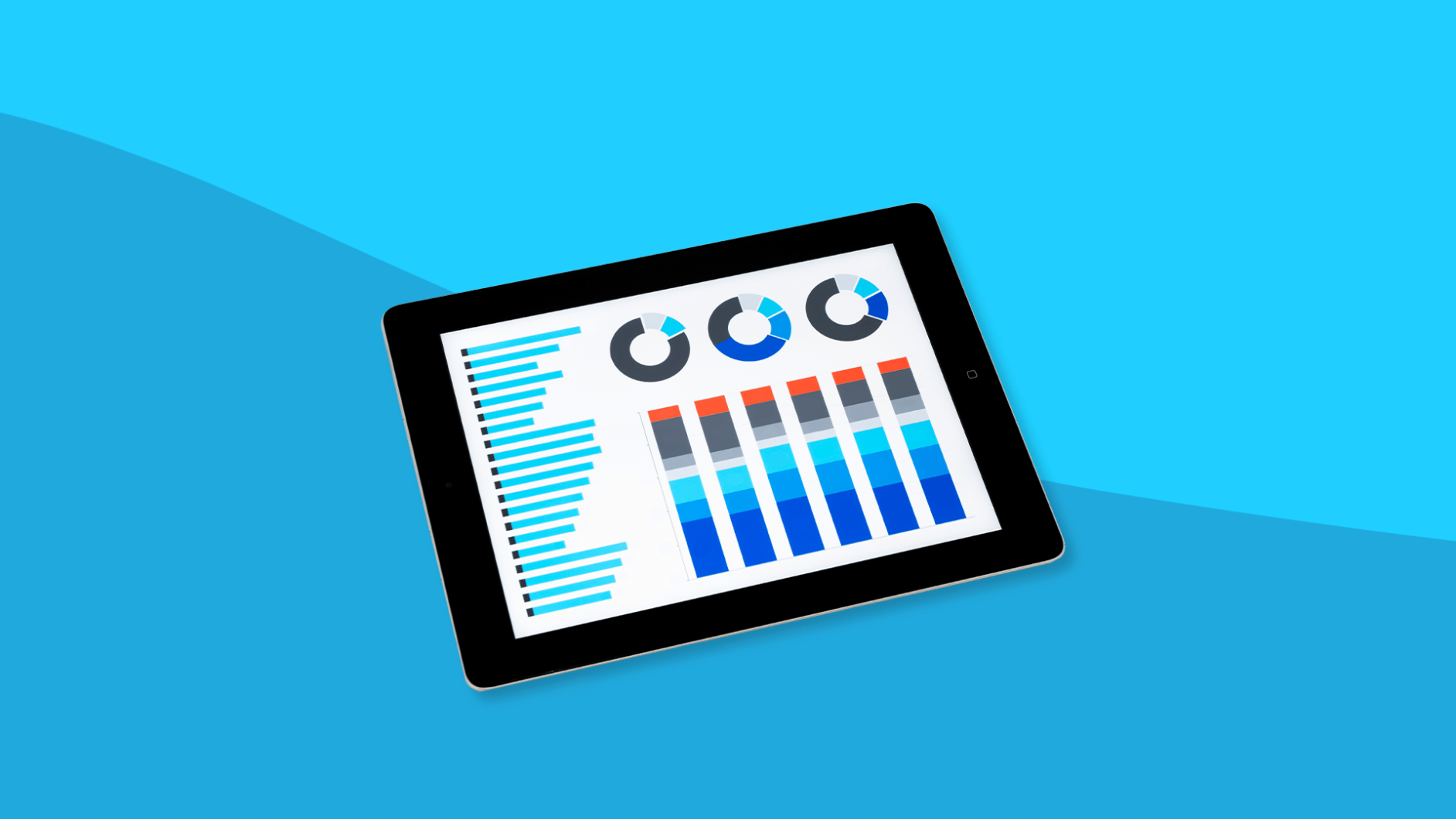What is childhood obesity? | How common is childhood obesity? | Childhood obesity stats worldwide | Childhood obesity stats by age | Childhood obesity stats by gender | Childhood obesity stats by race | Childhood obesity stats by socioeconomic status | Common complications | Costs | Treatment | FAQs | Research
Childhood obesity plagues children in the US. In a digital world, prioritizing the mental and physical health of our children can feel overwhelming. One of the best steps is being informed. In this article, we will talk about how common childhood obesity is, and how to prevent and treat it.
What is childhood obesity?
Childhood obesity is a preventable condition where a child is significantly overweight relative to their height, age, and sex. This is measured using body mass index (BMI), a ratio of weight in kilograms to height in meters. BMI in children is expressed in BMI-for-age-weight status categories and is tracked on the Centers for Disease Control and Prevention (CDC) “growth charts” we see during a pediatric well-child visit.
The CDC defines obesity in sex-specific, BMI-for-age-weight percentiles:
- Overweight: children between the 85% to less than the 95% percentile
- Obese: children in the 95th percentile or greater.
The World Health Organization (WHO) defines overweight and obesity in age-based categories.
WHO: Overweight vs. obese in children |
||
|---|---|---|
| Age | Overweight | Obese |
| Under 5 years | Weight-for-height greater than two standard deviations above the WHO Child Growth Standards median | Weight-for-height greater than three standard deviations above the WHO Child Growth Standards median |
| 5-19 years | BMI-for-age greater than one standard deviation above the WHO Growth Reference median | BMI-for-age greater than two standard deviations above the WHO Growth Reference median |
These categories are most easily visualized in their graphic form. Caregivers can ask the child’s healthcare provider to plot the child’s BMI-for-age. This can be done in paper form or on a digital, interactive chart.
How common is childhood obesity?
- Worldwide obesity has almost tripled since 1975. (WHO, 2021)
- In the United States, the prevalence of obesity in children and adolescents is 19.7%. (CDC, 2021)
- Obesity affects about 14.7 million children and adolescents. (CDC, 2021)
Childhood obesity statistics worldwide
- Worldwide, 39 million children under the age of five years were overweight or obese in 2020. (WHO, 2021)
- In 2016, over 340 million children and adolescents between the ages of five and19 years of age were overweight or obese. (WHO, 2021)
- Obesity was once considered a high-income country problem. However, the rates of children who are overweight and obese are now increasing in low-and middle-income countries. For example, obesity in children under five years of age has increased by nearly 24% in Africa since the year 2000. (WHO, 2021)
National childhood obesity statistics
- Childhood obesity affected 19.3% of children ages two to 19 from 2017 to 2018, which is about 14.4 million US children. (CDC, 2021)
- In children ages 2-19 years old, the rate of BMI increase approximately doubled during the COVID-19 pandemic compared to the pre-pandemic period. (CDC, 2021)
- Having obesity increases the risk of severe illness from COVID-19. (CDC, 2021).
Childhood obesity statistics by age
From the years 2017 to 2022, obesity increased with age:
- Among children between two and five years of age, 12.7% were obese. (CDC, 2021)
- Among children between six and 11 years of age, 20.7% were obese. (CDC, 2021)
- Among children between 12 and 19 years of age, 22.2% wereobese. (CDC, 2021)
Childhood obesity statistics by gender
- The prevalence of obesity is greater in boys than girls between the ages of five and nine years, according to 65% of countries’ reports. (BMJ, 2020)
- The prevalence of obesity is greater in boys than girls between the ages of ten and 19 years, according to 60% of countries’ reports. (BMJ, 2020)
- In 50% of high- and upper middle-income countries, the prevalence of obesity in boys is almost twice as great as girls from ages five to 19 years. (BMJ, 2020)
- According to the National Health and Nutrition Examination Survey, obesity statistics by gender in the United States are complex, with the differences of income and education widening among girls. (CDC, 2018).
Childhood obesity statistics by race
The prevalence of obesity among different races varied between children ages two to 19 years from 2017 to 2020:
- Hispanic children had an obesity prevalence of 26.2%. (CDC, 2021)
- Black children had an obesity prevalence of 24.8%. (CDC, 2021)
- Non-Hispanic White children had an obesity prevalence of 16.6%. (CDC, 2021)
- Asian-American children had an obesity prevalence of 9%. (CDC, 2021)
Childhood obesity statistics by socioeconomic status
- For all age groups and across all genders, the prevalence of obesity decreases as the head of household’s level of education increases. (CDC, 2018)
- Obesity prevalence is 19% among children with a household income less than or equal to 130% of the Federal Poverty Level (FPL). (CDC, 2018)
- Obesity prevalence is 20% among children with a household income greater than 130% of the FPL to less than or equal to 350% of the FPL. (CDC, 2018)
- Obesity prevalence is 11% among children with a household income greater than 350% of the FPL. (CDC, 2018)
Dr. David Culpepper, the clinical director of LifeMD notes, stated: “The increasing rate of childhood obesity is alarming when you consider the fact that the rate of obesity is twice as high for children below the poverty line. This suggests that access to resources gives parents a better range of choices when it comes to nutrition, and that those living in poverty may be unable to afford a healthy diet.”
Childhood obesity and overall health
- Being overweight and obese cause more deaths than being underweight. (WHO, 2021)
- Childhood obesity is associated with higher risks of adult obesity, psychological problems, and social problems. (CDC, 2021)
- Childhood obesity is associated with a three-fold increased risk of mortality in early adulthood. (PLOS Medicine, 2020)
- Children diagnosed with obesity suffer worse outcomes from COVID-19. They have been shown to have a 3.07 times higher risk of hospitalization and a 1.42 times higher risk of COVID-19-associated severe illness and death when hospitalized. (CDC, 2021)
- Obesity in childhood causes health conditions that previously were only seen in adults. These include (CDC, 2021):
- Hypertension (high blood pressure)
- Cardiovascular disease (heart disease)
- High cholesterol
- Type 2 diabetes
- Fatty liver disease
- Joint problems
- Infertility
- Depression and poor self image
- Suicide and attempted suicide
- Breathing problems such as asthma and sleep apnea.
The cost of childhood obesity
- The prevalence of childhood obesity has reached epidemic levels in the United States and is widely considered a public health crisis. (CDC, 2021)
- The World Obesity Federation predicts the number of school aged children and adolescents with obesity will rise from 150 million worldwide to over 250 million by 2030. This increase will place a significant burden on healthcare and social services as the population ages. (World Obesity, 2022).
- In the United States, the annual direct healthcare costs in 2010 were over $14 billion for children with obesity. This number is expected to reach $45 billion by 2050. (Diabetes, Metabolic Syndrome, and Obesity, 2010)
- There are significant costs associated with lost productivity, school absenteeism, premature mortality, increased insurance premiums, and increased disability payments. These are predicted to exceed $254 billion by 2050. (Diabetes, Metabolic Syndrome, and Obesity, 2010)
Causes of childhood obesity
Overweight and obesity are primarily caused by an energy imbalance between calories consumed and calories expended. Globally, there has been an increased intake of high-calorie, carbohydrate-rich, energy-dense foods. There has also been a decrease in physical activity due to the sedentary nature of many forms of work, school, play, entertainment, and social interactions.
While it is important to not minimize the role of calorie balance, there are other, more nuanced contributors to childhood obesity. These include (CDC, 2022):
- The nutritional quality of the food being consumed
- Eating patterns and behaviors
- Insufficient or poor quality of sleep
- Social determinants of health (where we live, learn, work, and play)
- Genetics
- Illness
- Certain medications
Childhood obesity prevention
The CDC’s Division of Nutrition, Physical Activity, and Obesity (DNPAO) is committed to reducing risk factors for obesity and preventing chronic diseases associated with obesity. DNPAO aims to reduce obesity, health disparities, and premature death by partnering with state and local programs focused on improving nutrition, supporting breastfeeding, increasing physical activity, and achieving health equity. (CDC, 2022)
Healthcare providers play a critical role in child health and development. For caregivers concerned about obesity prevention, their child’s healthcare provider can do the following (CDC, 2022):
- Provide families with community resources where they can obtain healthy foods for free or low-cost
- Monitor the child for patterns of overweight or obesity evidenced in a child’s growth chart
- Counsel caregivers about nutrition, physical activity, and optimal sleep
- Refer families to nutrition education and breastfeeding support services
- Refer children over six years of age with obesity to programs that aid in developing healthy lifestyle habits
Caregivers interested in preventing obesity among children should focus on (CDC, 2022):
- Providing infants with breast milk if possible
- Providing toddlers and children with diets rich in fruits, vegetables, and lean proteins
- Minimizing sodium in foods and sugary or sweetened beverages for children
- Encouraging physical activity and participating in physical activity with children,
- Minimizing screen time
- Ensuring children receive adequate sleep
- Teaching high school aged children how to shop for and prepare healthy meals
- Modeling healthy lifestyle habits
- Encouraging and involving other family, school, and community members to participate in modeling a healthy lifestyle.
Treating childhood obesity
The best treatment for childhood obesity is prevention. It is important to keep in mind that most of the data available captures children who are already obese. Identifying and implementing interventions to overweight children could prevent many of them from continuing the disproportionate weight gain and progressing to childhood obesity.
The following treatments may be implented in obese children.
- Family-based behavioral therapies and lifestyle interventions. There is strong clinical evidence that behavioral interventions are of critical importance and should include the entire family unit. These interventions include goal planning, self-monitoring of behaviors around eating, modeling a healthy lifestyle, and/or parent nutrition training. (American Psychological Association, 2019)
- Orlistat is a medication that inhibits the gastrointestinal absorption of dietary fat. It can be used in the management of obesity in children with significant comorbidities who are 12 years and older. Orlistat has been demonstrated to decrease BMI by 0.5 to 4.2 kg/m2. (Canadian Family Physician, 2011; Journal Pediatric Pharmacology and Therapeutics, 2012)
- Metformin is a medication used in the management of Type 2 diabetes in children 10 years and older. Metformin shows a short-term decrease in BMI by 0.2-2.1 kg/m2 after the first six months of starting it. However, weight loss usually stagnates after the first year of treatment . More studies are needed to determine metformin’s long-term weight effects. (Nutrition & Diabetes, 2018).
RELATED: Could one of these 7 prescription weight-loss pills be right for you?
Childhood obesity questions and answers
Are childhood obesity rates increasing?
Yes, childhood obesity rates are increasing worldwide and will almost double by the end of the decade.
What is the biggest contributor to childhood obesity?
The largest contributor to childhood obesity is the combination of increased consumption of high calorie food with increased inactivity and screen time.
What factors affect childhood obesity?
Childhood obesity is affected by culture, ethnicity, socioeconomic factors, and genetics.
What are 3 main causes of obesity?
Three main causes of obesity are:
1) High calorie, nutrient-deficient food and drinks
2) Physical inactivity and increased screen time
3) Cultural acceptance of increased weight and lack of disseminated information regarding weight and health status
How can we solve childhood obesity?
Childhood obesity needs to be prevented. Increased access to healthy, affordable, nutrient-dense foods and promotion of physical activity can help. Cultural shifts need to occur as well.
There is not one obesity gene. However, there is a polygenic component to obesity where certain people are more susceptible to gaining weight than others. More genome studies need to be done in order to better understand the relationship between weight gain and genetics. However, Increased activity and avoidance of certain types of foods can mitigate genetic effects. (Current Diabetes Reports, 2018; The Lancet, 2017)
Childhood obesity research
- Obesity and overweight, WHO
- Use of World Health Organization and CDC growth charts for children aged 0-59 months in the United States, CDC
- Overweight and obesity, CDC
- National Health and Nutrition Examination Survey 2017-March 2020, CDC
- Division of Nutrition, Physical Activity, and Obesity, CDC
- Childhood obesity and adult cardiovascular disease risk factors: a systematic review with meta-analysis, BMC Public Health
- Perspective: childhood obesity requires new strategies for prevention, Advances in Nutrition
- Longitudinal trends in body mass index before and during the COVID-19 pandemic among persons aged 2-19 years–united states, 2018-2020, CDC
- Obesity, Race/Ethnicity, and COVID-19, CDC
- Prevalence of obesity among youths by household income and education level of head of household–United States 2011-2014, CDC
- Prevention and management of childhood obesity, The Indian Journal of Pediatrics
- Association of childhood obesity with risk of early all-cause and cause-specific mortality: a Swedish prospective cohort study, PLOS Medicine
- Genetics of obesity: what genetic association studies have taught us about the biology of obesity and its complications, The Lancet
- Genetics of obesity in diverse populations, Current Diabetes Reports
- Long-term metformin treatment in adolescents with obesity and insulin resistance, results of an open label extension study, Nutrition & Diabetes
- Pharmacologic treatment of pediatric obesity, Canadian Family Physician
- Family-based behavioral treatment is key to addressing childhood obesity, American Psychological Association
- Treatment of obesity in children and adolescents, Journal Pediatric Pharmacology and Therapeutics
- The economic impact of obesity in the United States, Diabetes, Metabolic Syndrome, and Obesity
- World Obesity Atlas, World Obesity
- Sex and gender differences in childhood obesity: contributing to the research agenda, BMJ
- Obesity in children and young people: a crisis in public health, Obesity Reviews











